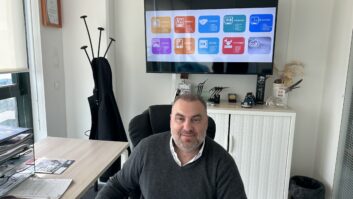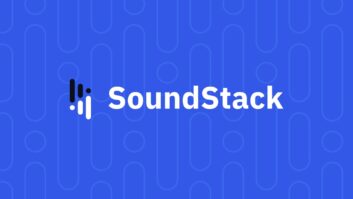The International Association of Audio Information Services is looking for another broadcaster to distribute reading services in Oregon.
That’s in the wake of a decision by Oregon Public Broadcasting to turn off its reading service, a victim of tight budgets and the DTV transition.
Four OPB employees, including two full-timers, lost their jobs as a result.
Some of the reading service staff and volunteers will continue to produce the service in space provided by the state agency for the blind, according to IAAIS, which added it’s unknown whether the new space will be a short- or long-term solution.
The IAAIS sees OPB’s decision as disturbing and hopes it’s not a trend.
“It’s worrisome because it sets a precedent,” said Heather Lusignan, immediate past president of IAAIS. Reading service organizers say the OPB decision ignores the needs of older, visually-impaired, less technology-literate people.
OPB covers the state with 115 video channels, a mixture of analog full-service TV and translators, DTV, HDTV and cable channels. The DTV and HDTV channels are in Portland, Corvallis, Eugene, Bend and La Grande.
OPB also has seven AM and 27 FM frequencies, according to its Web site.
In reviewing its options, OPB said it became clear the broadcaster can provide a greater public service by promoting the services of organizations already serving the blind and visually impaired. It intends to launch such a cross-platform campaign this fall.
Reading services provide audio programming for the visually impaired and other targeted audiences, who typically receive the audio on specialized receivers.
OPB moved its Golden Hours reading service, which had been launched in 1975 on KOPB(FM)’s subcarrier, to the SAP channel of its TV station in 1997. OPB also streamed the reading service online.
Demise of SAP
Last year, KOPB(FM) in Portland had turned on the state’s first HD3 channel with a modified version of OPB’s radio reading service at 15 kbps bandwidth. This was the first time the reading service had been carried via a radio station signal in the state since 1997.
Yet now the broadcaster has decided to stop airing all versions of the service — SAP, HD Radio and online.
OPB’s HD3 channel now carries interim programming; plans for that channel have not been determined, a spokeswoman told Radio World.
In a statement, OPB said the decision to end the reading service was difficult and came after months of research and discussions with groups serving the blind and visually impaired.
One of the challenges OPB identified was the demise of SAP channels as part of television’s digital transition. OPB said once TV goes digital it will have no “feasible” way to deliver the service following the end of analog broadcasting.
But OPB also cited the difficulty in identifying “any significant user base” for the reading service, the cost of producing content and lack of any “viable revenue sources” to support it. OPB spent some $150,000 a year to run the reading service.
The IAAIS said a survey by the state of Oregon in 2006 shows an estimated 250,000 residents aged 45+ could benefit from a reading service.
When asked, the broadcaster did not elaborate on why it made this decision several months before the February 2009 DTV analog cut-off date.
Two full- and two part-time employees lost their jobs when the reading service was eliminated, the broadcaster confirmed. OPB has 170–180 employees overall.
Compared to 30 years ago, there are more options now for the visually impaired to get their news, according to OPB. The Talking Book and Braille Library is one option; patrons can go to the library or have material sent to them.
This Is One Radio Audience That’s GrowingNationally, there are more than 100 reading services, according to the IAAIS, although that figure is an estimate because services are organized differently state by state.
Most eastern states are home to several individual stations; most western states have either single-source statewide services, as in Oregon, or hybrids like Sun Sounds of Arizona.
“We are statewide, but we operate as a network with local affiliate stations in Tucson, Flagstaff and Yuma, which announce their own local newspapers, grocery and shopping information,” said Bill Pasco of Sun Sounds.
“Then they connect to our Tempe network head via satellite for all the regional, national and international material. This keeps the service local while allowing for economy of scale. So, Sun Sounds is counted as one organization, but is actually four reading services.”
While the number of reading service stations has remained fairly static in the United States, listenership has steadily risen as boomers retire and age.
Incidence of blindness is rising sharply among boomers despite some of the advances in eye care, said Pasco.
The IAAIS estimates the U.S. radio reading audience at roughly 2 million people. Other estimates point to a potential audience of some 10 million, he said.
Another option is the Newsline run by the National Federation for the Blind (www.nfb.org/nfb/Newspapers_by_Phone.asp). With a touch tone telephone, users can have stories from several newspapers and magazines read to them. The nationwide service can be accessed from wherever the user is.
“This service suits a person who has an active lifestyle,” said Scott White, director of Sponsored Technology Programs for the NFB.
Both the library and Newsline service are free to the visually impaired.
However, the IAAIS says people with age-related macular degeneration, the leading cause of blindness in older people, are 12 times more likely to have problems using a telephone compared to visually unimpaired elderly people.
Recognition
Internet streaming and podcasting have made audio more readily available to the public. But IAAIS says not everyone has access to a computer or the Internet; further, a typical reading service user grew up using newspapers, magazines and books and may not relate to the Internet, synthetic speech or iPods.
The IAAIS is still pursuing a broadcast outlet for reading services in Oregon and has formed a task force to accomplish this goal.
Lusignan of VoicePrint, a division of Canada’s National Broadcast Reading Service, and Bill Pasco of Sun Sounds of Arizona co-chair the task force.
“We’ve been fighting for recognition in the digital realm,” said Lusignan. Both the SAP channels for TV and FM subcarriers are lost in the digital transition, though the digital television technology standard does include audio channels.
As for a replacement technology when SAP goes away, Rocky Mountain PBS/Audio Information Network of Colorado are developing a digital television audio receiver for reading services for blind and visually impaired users who used to listen on analog SAP with a target year-end shipping date, according to IAAIS.
Also, the WGBH Media Access Group tested two of the National Telecommunications and Information Administration-certified coupon eligible converter boxes and determined that two brand-name boxes pass through video description and can access alternate audio channels without having to go through the set-up menus that people with vision impairments find difficult or impossible to use, according to the IAAIS.
For radio, the IAAIS has worked with Ibiquity for years on inclusion in the IBOC receiver chip. At the 2008 NAB Show, NDS said its conditional access technology, which will include radio reading service capability, would be in new IBOC chips expected to be available to receiver manufacturers later this year.
In May, Samsung said it expects to release its new HD-R chip to device makers in August.
Conceivably, the capability would be in new HD Radios by year-end.
“Radio reading services fulfill a unique news and information gap for their target audience — full-text readings of national, regional and locally published print media,” said Pasco.
“How much longer will it take the broadcast industry and the FCC to recognize, one, that this audio information programming is vital to the day-to-day news/information needs of the burgeoning number of American consumers with limited or no access to print; and two, that accessible digital technology now is readily achievable with minimal cost at the manufacturing stage and should be the norm in broadcasting?”
Lusignan stepped down in May after finishing a second two-year term as president. Kim Walsh of the Detroit Radio Information Service was elected as the president of IAAIS at the organization’s annual convention.











